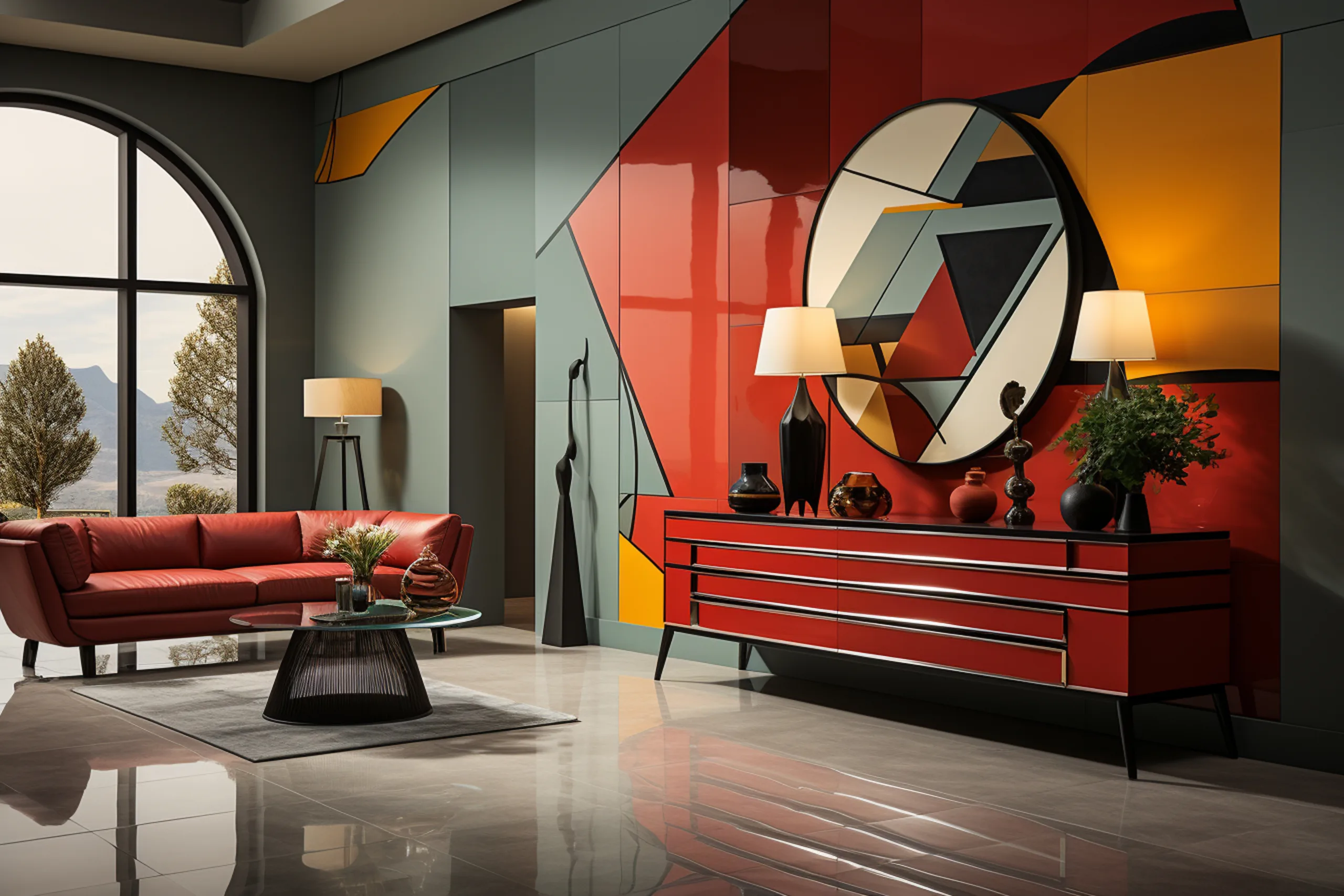
Luxury interior design in 2025 represents a revolutionary convergence where global sustainability meets authentic cultural heritage, creating unprecedented opportunities for sophisticated homeowners. The most transformative trend is “conscious luxury”, where sustainable materials, artisanal craftsmanship, and meaningful storytelling command premium prices while respecting environmental and cultural values.
What defines luxury interior design in 2025?
The luxury market has fundamentally shifted toward authenticity and sustainability. According to Bain & Company’s luxury report, while overall luxury growth remains modest at 0-4% through 2025, luxury home experiences continue outpacing goods spending, with 72.6% of buyers planning to maintain or increase interior investments.
Sustainable luxury materials now dominate high-end projects, with 43% of interior design projects mandating eco-friendly approaches. This trend perfectly aligns with Ghana’s abundant FSC-certified hardwoods, particularly African mahogany and odum, which offer both environmental credentials and the rich, warm aesthetics currently defining luxury palettes.
Artisanal craftsmanship trends represent perhaps the strongest opportunity for Ghanaian luxury design. As noted by Elle Decor, there’s growing appreciation for vintage and natural materials, particularly among younger luxury clients embracing authentic, story-driven pieces.
How can Ghanaian design elements elevate luxury interiors?
Ghana’s design heritage offers sophisticated luxury applications extending far beyond decorative accents. Kente cloth’s mathematical precision creates sophisticated contemporary applications when translated to modern interiors. Each authentic Kente pattern carries specific cultural meaning, Fathia Fata Nkrumah (“One person does not govern a nation”) or Sika Fre Mogya (“Money calls blood”), providing the narrative depth luxury clients increasingly value.
Adinkra symbols provide architectural elements satisfying luxury design’s emphasis on meaningful, custom features. Symbols like Sankofa (“Learn from the past”) and Nkyinkyim (life’s twists) appear on contemporary luxury developments, demonstrating how traditional motifs translate to sophisticated architectural applications.
Local materials offer authenticity and performance. African mahogany provides rich, reddish-brown colouring, aligning with 2025’s warm colour trends, while traditional pottery techniques create organic ceramic forms satisfying biophilic design requirements. Contemporary producers like Kpando Pottery combine traditional hand-building with modern finishes.
Which colours and textures dominate luxury spaces in 2025?
Current colour palettes strongly favour Ghana’s traditional aesthetic preferences. Pantone’s Mocha Mousse joins earth-toned collections featuring warm browns, sage greens, and sun-baked terracotta, colours echoing Ghana’s traditional Kente palettes and natural landscape.
These “grounding” colours represent deliberate movement away from cool greys toward colours that “feel grounded and alive,” perfectly complementing traditional Ghanaian colour symbolism where gold represents wealth and spiritual purity.
How does technology integration enhance luxury living?
Smart home technology has accelerated in Ghana’s luxury market following pioneering projects like the country’s first fully automated residence. Companies like Smart Building Solutions provide comprehensive systems including theatre modes, security automation, and energy management.
Ghana’s smart home market projects growth from $53.1 million in 2024 to $85 million by 2028, indicating strong adoption among luxury homeowners seeking both convenience and infrastructure solutions.
What practical steps ensure successful luxury renovations?
Strategic sourcing balances cost, quality, and authenticity. Local materials like timber, stone, and traditional textiles offer cost-effectiveness and climate adaptation, while selective international imports provide luxury finishing touches.
Budget considerations for luxury renovations range from GHS 50,000-150,000 for basic luxury projects to GHS 400,000+ for high-end renovations. Strategic prioritisation focuses on high-impact areas, mixing local craftsmanship with select imported elements.
Climate-responsive maintenance proves essential for material longevity in Ghana’s tropical environment. Top-performing materials include treated hardwoods like teak, clay roof tiles for natural insulation, and proper moisture management systems.
Creating Your Luxury Interior Vision
The convergence of global luxury trends with Ghana’s cultural strengths creates compelling opportunities for affluent homeowners. Properties featuring authentic Ghanaian design elements command premium prices while satisfying international standards, as demonstrated by Trassaco Valley’s sustained pricing power.
At VAAL Group, we understand that luxury transcends expensive materials; it’s about creating spaces that honour heritage while embracing innovation. Our developments, like Villanova and Legato Heights, demonstrate how authentic cultural elements integrate with cutting-edge technology and sustainable practices.
Ready to transform your space with conscious luxury design? Contact VAAL Group today to explore how global trends and local heritage can create your perfect luxury interior.
FAQs
What makes 2025 luxury interior design different from previous years?
The shift toward conscious luxury emphasises sustainability, cultural authenticity, and meaningful craftsmanship over purely expensive materials.
How can I incorporate Ghanaian design elements authentically?
Work with established artisan cooperatives and understand cultural context rather than simply extracting designs without attribution.
What’s the typical timeline for luxury interior projects in Ghana?
Comprehensive luxury renovations typically require 16-24 weeks, with optimal construction during November-March dry seasons.
Which local materials work best for luxury interiors?
African mahogany, traditional ceramics, Kente textiles, and locally quarried stone offer both authenticity and luxury performance.
How important is smart home technology in luxury design?
Technology integration provides competitive differentiation, with Ghana’s smart home market growing 60% by 2028, making it essential for premium properties.